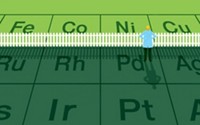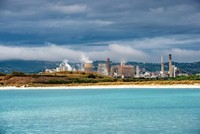Advertisement
Grab your lab coat. Let's get started
Welcome!
Welcome!
Create an account below to get 6 C&EN articles per month, receive newsletters and more - all free.
It seems this is your first time logging in online. Please enter the following information to continue.
As an ACS member you automatically get access to this site. All we need is few more details to create your reading experience.
Not you? Sign in with a different account.
Not you? Sign in with a different account.
ERROR 1
ERROR 1
ERROR 2
ERROR 2
ERROR 2
ERROR 2
ERROR 2
Password and Confirm password must match.
If you have an ACS member number, please enter it here so we can link this account to your membership. (optional)
ERROR 2
ACS values your privacy. By submitting your information, you are gaining access to C&EN and subscribing to our weekly newsletter. We use the information you provide to make your reading experience better, and we will never sell your data to third party members.
People
Reactions: On scientists playing the guitar and taking a holistic view of ‘green’ catalysts
June 13, 2024
| A version of this story appeared in
Volume 102, Issue 18
Letters to the editor
Scientists playing guitar
Thanks C&EN for this brief article highlighting Carolyn Bertozzi’s bass guitar passion (May 6, 2024, page 40)!
I am currently working up a presentation “Music Is Dope(amine)”—maybe a TEDx talk somewhere someday—about how music operates and stimulates the same creative centers of the brain as many of our deeply advanced technical endeavors.
While in chemistry graduate school at the University of Waterloo in Ontario in the late 1970s, country rock was quite in vogue. I took part of my scholarship funds and purchased a student-model pedal steel guitar, more of a musical machine than instrument. The pleasure and challenge of its complexity still so stimulate my brain that even now in my later 60s, I secure the occasional weekend gig in the Detroit area (now with professional-level and quality instruments). I have also played some Fender basses, as Bertozzi, but I now have two five-string Carvin basses to stimulate the lower octaves of my musical interests.
Heinz Plaumann
Brownstown, Michigan
Holistic view of ‘green’ catalysts
The article “The Elements of a Green Catalyst” (C&EN, Feb. 12/19, 2024, page 28) discusses the benefits of using abundant, cheap metals like iron, copper, cobalt, and nickel over expensive, rare metals like platinum, rhodium, ruthenium, and palladium in catalysis. Key points include cost, performance, toxicity, and sustainability.

In cross-coupling reactions, nickel and other more abundant metals allowed scientists to achieve interesting results. However, as Bruce Lipshutz points out in the article, palladium is highly reactive and can be used in very small amounts under sustainable conditions, minimizing its environmental impact. This high efficiency makes Pd attractive despite its cost and rarity because its benefits outweigh the cost benefits of cheaper metals. The rise in palladium prices has incentivized the industry to enhance metal recycling efforts. My survey of Italian companies involved in active pharmaceutical ingredient production indicates that in heterogeneous catalysis, the recovery rate exceeds 95%, while in homogeneous catalysis, it’s over 80%. However, for metals like nickel or copper, there’s a significant risk of not recovering them, as their low cost often makes recycling economically unviable. Consequently, these metals may end up being discarded with waste rather than recycled.
Lake Orta rapidly degraded in Italy around 1927–28, primarily because of the company Bemberg’s dumping of copper sulfate waste from cuprammonium rayon production. The establishment of the tap industry alongside the lake contributed to the disaster because of the dumping of nickel, zinc, and chromium salts. The pH reached the lowest level (3.8–3.9) around 1985 (Mem. Ist. Ital. Idrobiol. Dott. Marco de Marchi 1986, 44, 47). As a remedial action, the lake was limed in the late ’80s with 10,900 metric tons of CaCO3, bringing the pH back to 7. The lake is recovering; however, the lake bed still contains several hundred metric tons of metals, mainly copper, chromium, and nickel (J. Limnol. 2001, DOI: 10.4081/jlimnol.2001.1.213). This example is extreme and is intended to illustrate a point rather than reflect the industry status in this millennium. However, it represents the risk associated with using inexpensive but environmentally hazardous metals and underlines the necessity to have a holistic approach in process industrialization, considering all the practical aspects related to the environmental impact of metal use. The transition from expensive metals like palladium to cheaper alternatives seems to be economically advantageous and “greener” because of the relative abundance of the metal, but it doesn’t necessarily guarantee a more sustainable industrial process.
Walter Cabri
Bologna, Italy





Join the conversation
Contact the reporter
Submit a Letter to the Editor for publication
Engage with us on Twitter